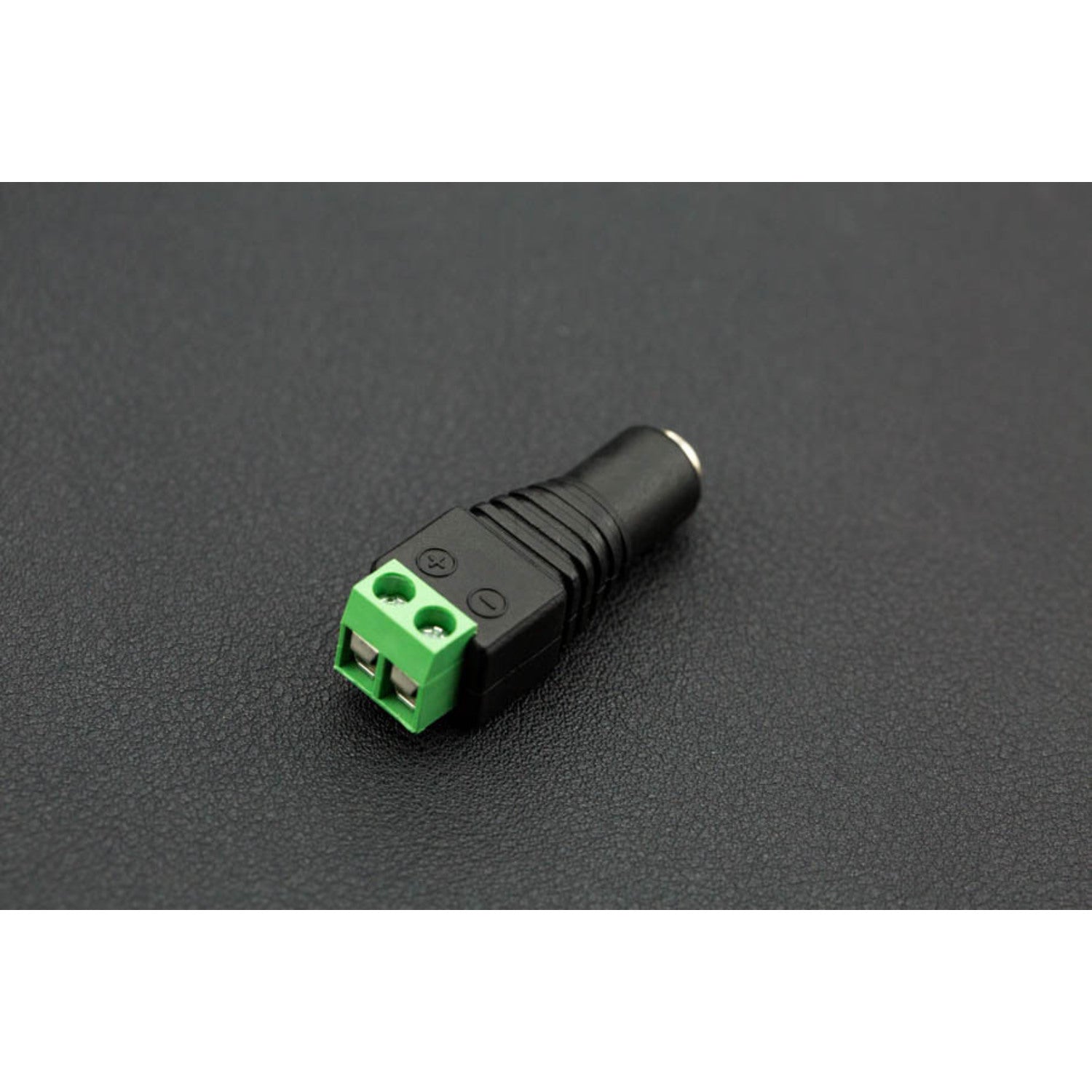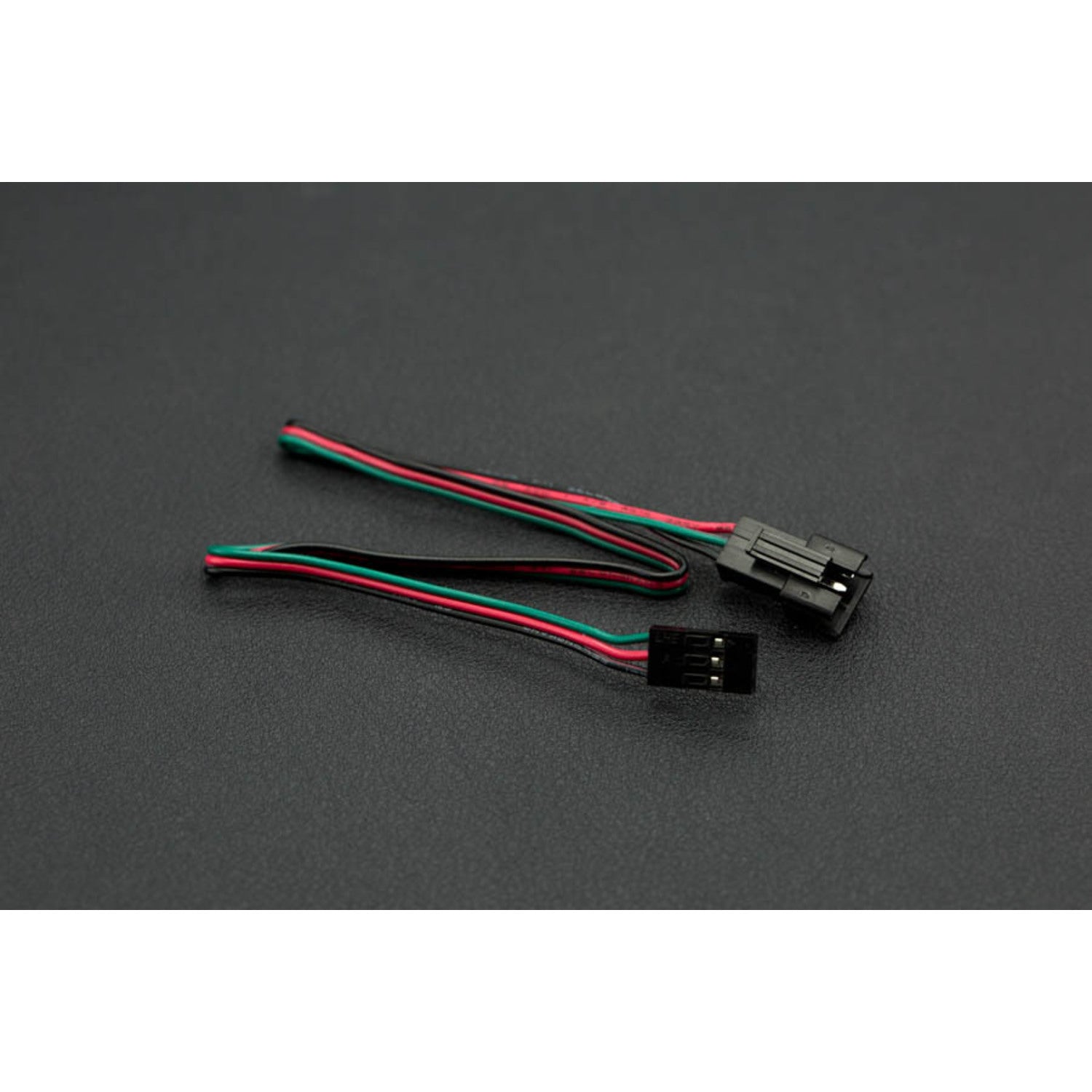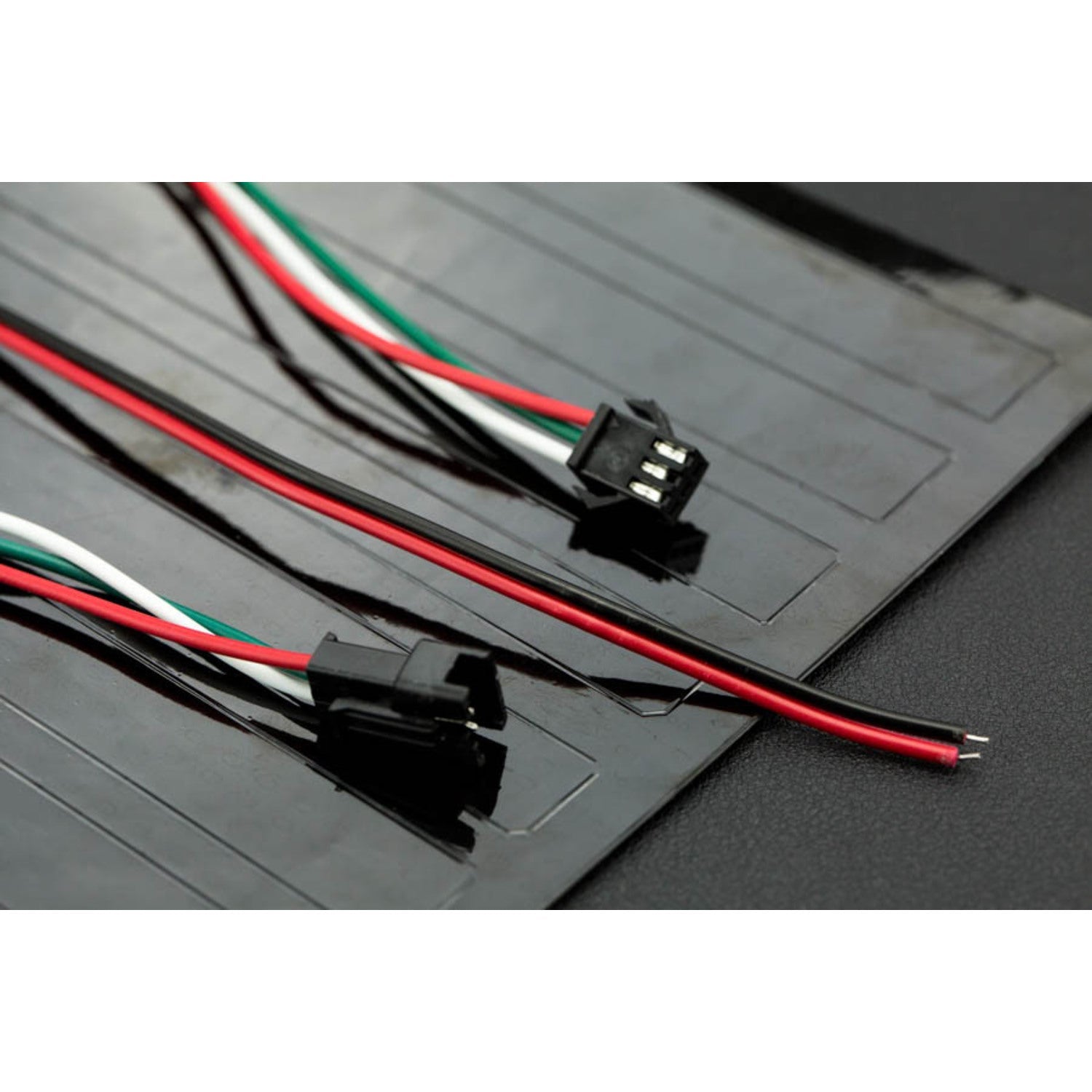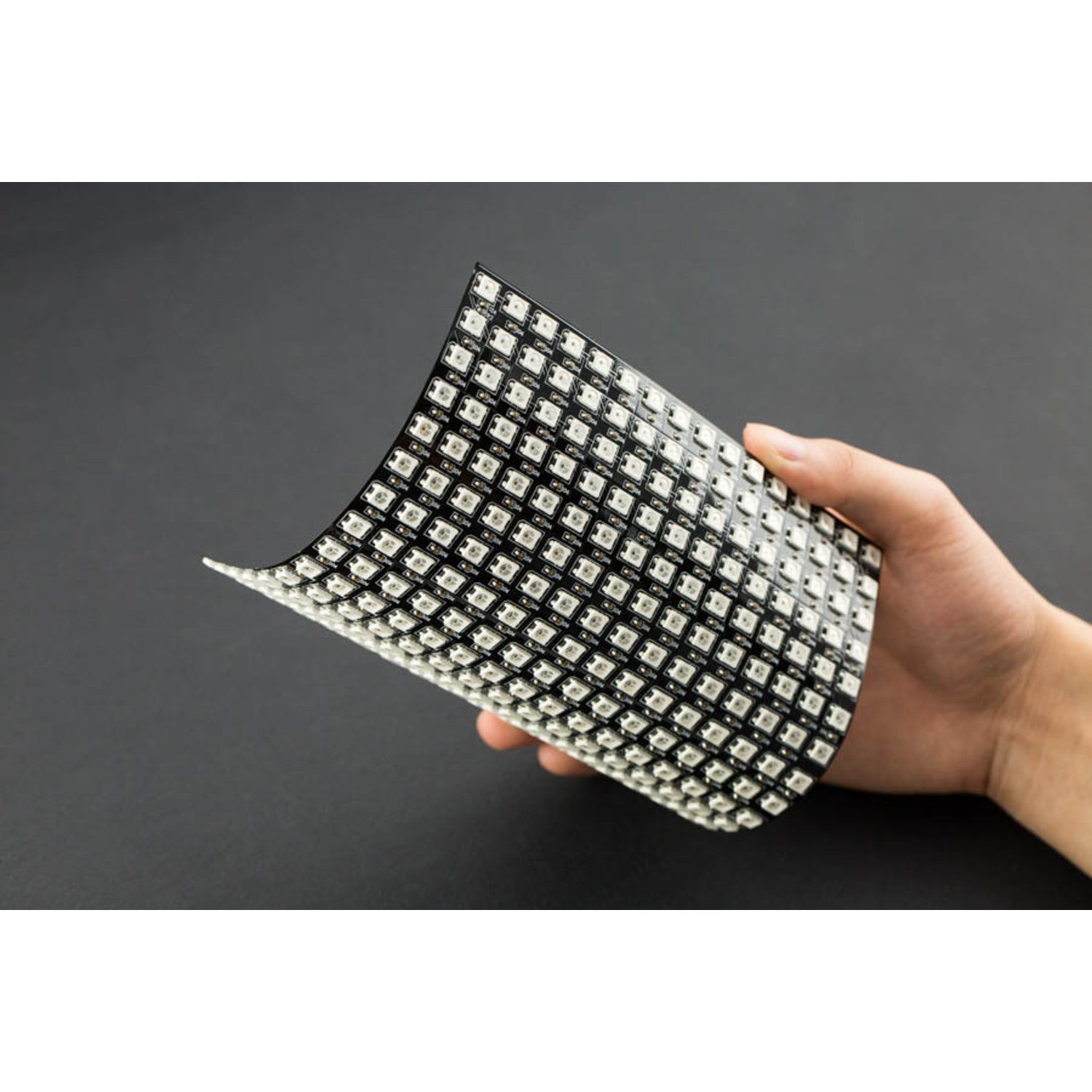Great news! The Gravity family welcomes a new addition - the Flexible 16x16 RGB LED Matrix Panel. This square panel comes with a pre - soldered XH2.54 3 - pin interface that matches perfectly with the Arduino I/O expansion shield. It's based on WS2812 or SK6812 intelligent control LEDs. Each LED can be individually controlled with RGB pixels, offering 256 levels of brightness and a total of 16777216 colors. With a scanning frequency of at least 400Hz, it shows vivid colors. The single - wire control board is paired with a custom cable, allowing it to work with Arduino I/O expansion shields without soldering. It also supports cascading control. Just connect Din to the DOUT port. Using the open - source Arduino library, you can control the whole LED array with just one pin. Note that each LED needs a maximum current of 18mA. When using multiple modules, it's advisable to power multiple LED matrices via the Servo Power Port of the DFRobot Gravity IO expansion board. Features include full - color RGB, cascade control support, Gravity interface compatibility, and external power supply support. Specifications: Operating Voltage is 5V, LED Type is SK6812/WS2812, Communication Interface is Gravity 3 - Pin interface, Operating Temperature ranges from - 25 to + 80 °C, Dimension is 160*160 mm/6.3*6.3 inches, and Weight is 172g. Shipping includes one Flexible 16x16 RGB LED Matrix, one Matrix Gravity Interface Cable, and one DC Barrel Jack Adapter - Female.






Using this Gravity Flexible 16x16 RGB LED Matrix is easy. First, connect the custom cable to the Arduino I/O expansion shield. There's no need to solder. If you want to use multiple matrices, connect the Din of one matrix to the DOUT of another for cascading control. With the open - source Arduino library, you can control the whole setup using just one pin. When it comes to power, each LED needs a maximum current of 18mA. If you're using multiple modules, use the Servo Power Port of the DFRobot Gravity IO expansion board to power them. Keep the operating temperature between - 25 and + 80 °C. To maintain it, avoid physical damage to the panel. Clean it gently with a soft, dry cloth if it gets dirty.







